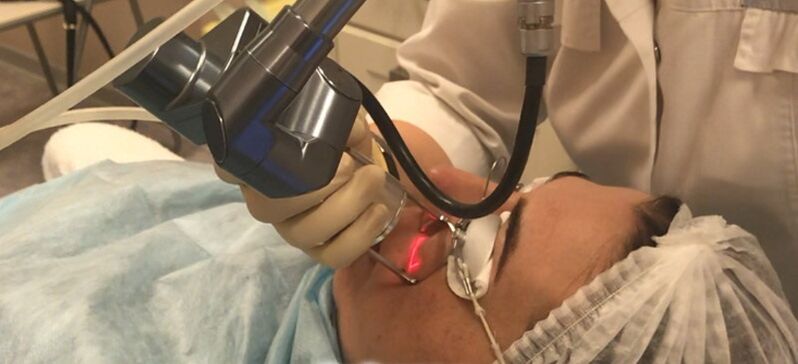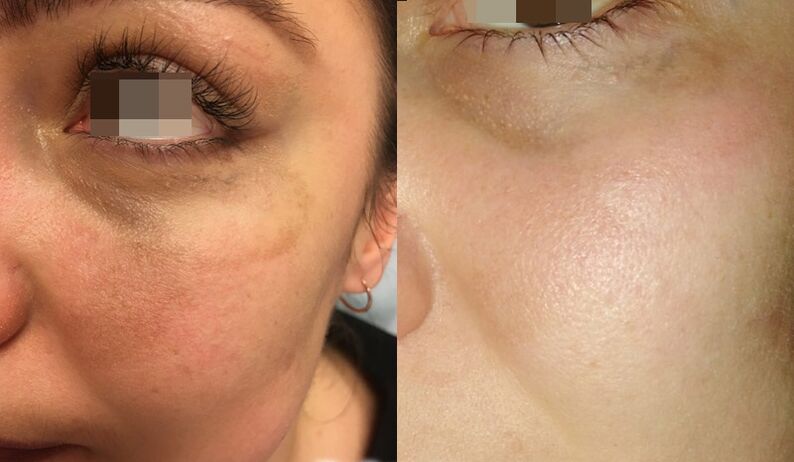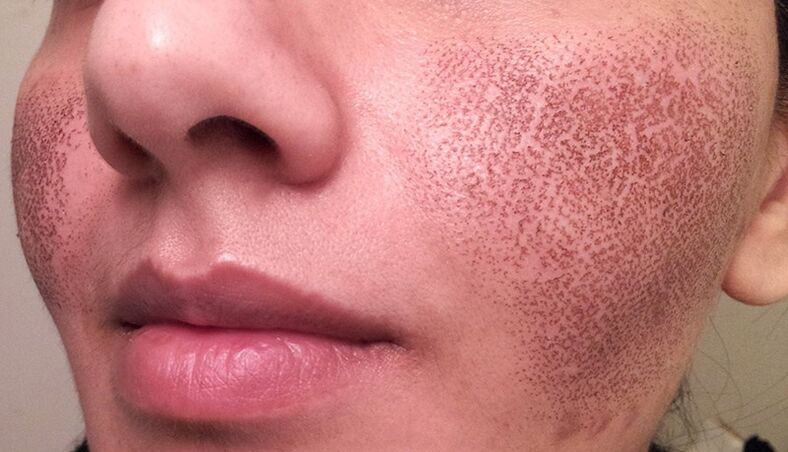
Who doesn't dream of having young, beautiful and healthy skin? Unfortunately, her aging is an inevitable process. With age, elasticity is lost, pores become larger, wrinkles and age spots appear. How to deal with this, can it be done without surgery?
One of the most effective options is fractional laser pyrolysis. This is a non-surgical rejuvenation process that can solve various age-related and aesthetic problems, including smoothing wrinkles and correcting scars.
How does this work?
The photothermal decomposition process is based on the directional action of the laser beam, dividing it into hundreds of the smallest beams (so-called fractions, hence the name). When they hit the target skin area, they cause small, tightly controlled temperature damage.
In response to these micro-traumas, the natural regeneration process begins. Increased production of collagen-a protein responsible for skin tone and elasticity. The damaged layer is completely updated. The result-a significant rejuvenating effect, which is mainly due to the activation of our body's natural internal resources.
Indications for graded pyrolysis
Through this program, you can:
- Smooth fine lines;
- Improve skin tone and make it more elastic;
- Correction and soothing: reduce pores, remove acne marks (post-acne), small stretch marks, scars after burns or cuts and other scar defects;
- Lighten pigmentation, chloasma (including age-related);
- Perform a full laser peeling-from resurfacing to full resurfacing.
In general, partial pyrolysis is a universal technique that is suitable for patients of any age, and it is considered an ideal choice for those who want to get rejuvenated but are not ready to see a plastic surgeon. It can be used on the face, including the delicate areas of the eyelids and skin around the eyes, or on the body-for example, the neck, shoulders or hands.

What equipment
Photopyrolysis is carried out with various CO2 and erbium lasers, two of which require special attention:
- Fraxel-has long been a leader of its kind, and its name has become a household name for some rejuvenation techniques. Today it is considered obsolete, although very effective. It has several varieties (re: store, re: fine, re: pair) designed for different types of skins and different depths.
- Mixto is a new generation of lasers and today's "gold standard". It is different from Fraxel in wavelength and also uses a special trajectory of the beam. As a result, it surpasses its outstanding predecessor in all aspects: surgery becomes more comfortable, safer, requires fewer treatments, and recovers faster.
There are also many analog devices, mainly from Asia. They may be similar in principle to Fraxel and Mixto, but they are always inferior in safety because they do not have such precise settings for the fractionation, intensity and depth of beam penetration.
How is the procedure
The meeting started with a consultation with a beautician, in which indications and other nuances were specified. No special training is required, so you can start using the laser directly:
- The first step is to clean the skin. An anesthetic (usually a lidocaine-based gel) is then applied to the target area.
- Patients and beauticians wear special glasses to protect their eyes from accidental laser hits.
- Next, the doctor adjusts the equipment-setting the penetration depth, Joule power, pulse frequency and other parameters. They are selected based on the problem that needs to be solved.
- After that, the beautician slowly pushes the nail clippers through the desired skin area, giving it the same light score. This can be uncomfortable (depending on the individual's sensitivity to pain), but in general it is tolerable-in most cases, patients describe their sensation as a slight tingling or burning sensation.
- The whole process, excluding preparation, takes about 20 minutes, the exact time depends on the size of the treatment area. After finishing, immediately apply the soothing cream on the face. You can go home and resume your daily routine with minimal restrictions.
How long does it take to recover after partial pyrolysis and how to take care of your skin during this period?
Up to 24 hours after treatment, the face will still be red and sometimes slightly swollen. It looks like what happens when a person gets a minor sunburn. Don't be afraid, this is a natural reaction, indicating that the rejuvenation mechanism has been activated.

The next day, characteristic brown spots will appear. And on the third day, another indicator that had begun to change appeared-micro-peeling of the skin (peeling of particles from the old surface), but this situation passed quickly. In addition, within 1-2 weeks after the treatment, bronzing may continue to exist, that is, the effect of tanning.
There are few restrictions after surgery, but it is extremely important to observe them, otherwise there is a risk that not only the expected results will not be obtained, but also complications:
- For 2-3 weeks, you cannot sunbathe, including in the solarium, and you cannot go to the bath/sauna (on the eve of the meeting, you can). At the same time, partial pyrolysis itself only proceeds during periods when there is no active sun.
- In the first few weeks, moisturizing cosmetics (light cream that does not clog pores) should be applied to the treated area.
- The treated skin must be protected from strong mechanical stress. Until it is completely healed, it is forbidden to use any peels and scrubs, and creams containing acids. Under no circumstances should you peel off peeled scales, strongly scratch or rub the area for laser pyrolysis.
The rejuvenation effect grows and reaches its peak within a month. To obtain complete results with Fraxel lasers, in most cases, 3-6 procedures are required. Mixto handles small defects in 1 session and more serious defects in 2-3. The interval between them is a few weeks so that the skin has time to fully recover.

The final result is not "time-sensitive", but it is logical that skin condition will deteriorate under the influence of age and external factors over time.
Contraindications, complications and side effects
As with other hardware calibration methods, partial pyrolysis is not performed under the following conditions:
- Tumor disease
- epilepsy;
- Inflammatory process of the skin of the target area (neurodermatitis, psoriasis, atopic dermatitis);
- Fresh herpes outbreaks;
- Acute infectious disease;
- Recent midline or deep chemical peels, mechanical dermabrasion;
- Pregnancy and lactation.
As for complications and side effects, the most common is increased pigmentation in the treated area. Fraxel is another laser of the previous generation. If it is set incorrectly, it can cause very severe burns to deep scars. Mixto does not cause such problems.
Nevertheless, the effectiveness and safety of the procedure still depend to a large extent on the beautician: the doctor must understand what he does, why and how he uses such a powerful instrument. Therefore, the way to avoid complications and other undesirable consequences is very simple-just contact an experienced expert who knows how to use modern lasers.
What is the cost of partial pyrolysis?
The cost of the service depends on many factors: the brand of the equipment used for laser correction, the volume of the treatment area, the duration of the course, and the qualifications of the specialist. Ask your beautician for the exact quantity.
























